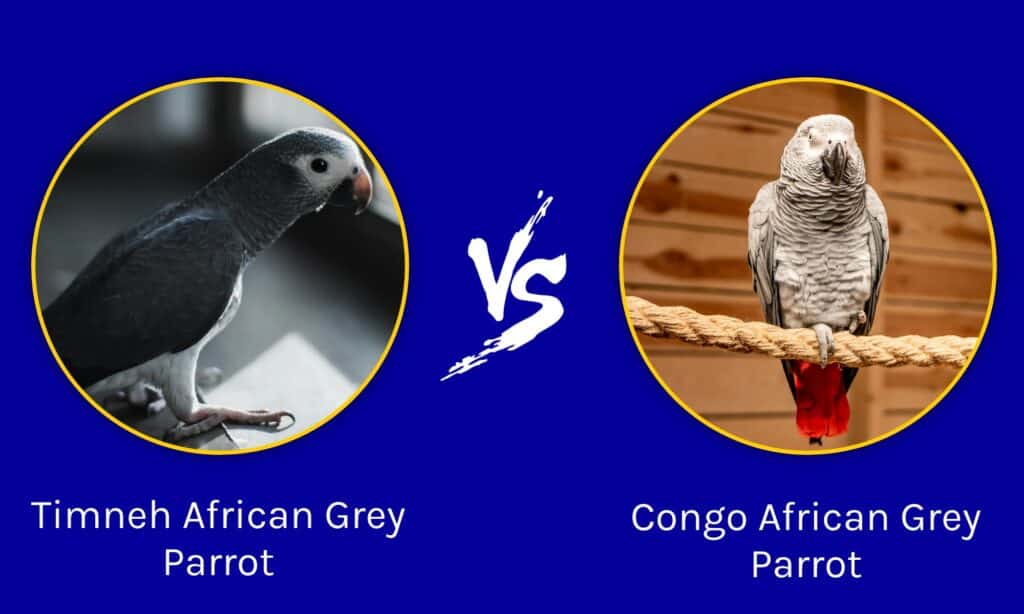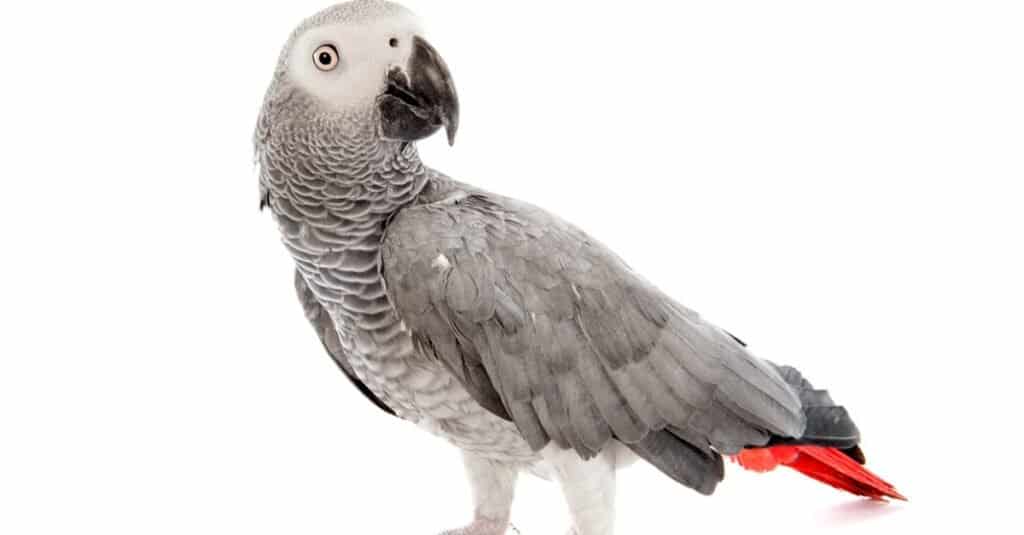There are over 350 distinct species that fall within the Parrot family, all with vibrant and unique colorations and patterns. The Timneh and Congo are the two species of African grey parrots, each from different regions. However, trying to spot the differences between the Timneh and the Congo African grey parrots can be challenging.
In this article, we would explore the key differences between the Timneh and Congo African grey parrots in detail.
Differences between Timneh and Congo African Grey Parrots

The key differences between Timneh and Congo grey parrots are their appearance, size, and personality.
The easiest way to tell them apart is by looking for the noticeably darker grey coloring of the Timneh. Another key difference to look for is the much brighter red tail feathers of the Congo. Both the Timneh and Congo African grey parrots differ quite in appearance and personality.
The Timneh and Congo African grey are the only two subspecies of the grey parrot. They have many similarities, and telling them apart is difficult if they aren’t side-by-side. However, in addition to differences in coloring, other key physical differences can help you tell which grey parrot is which.
Timneh vs Congo African Grey Parrots: Size

The Congo African Grey is much larger than the Timneh.
©iStock.com/Adrian Black
The Timneh has an average between 6-10 inches tall and weighs between 10-15 ounces, while the Congo grey parrot is about 10-15 inches tall and weighs 15-20 ounces. The Congo grey parrot is significantly larger than the Timneh.
Timneh vs Congo African Grey Parrots: Appearance

The Timneh has a darker grey coloring and a distinctive v-shaped pattern on the upper chest.
©cynoclub/Shutterstock.com
Timneh parrots are much darker charcoal grey in color, and the head, back, and upper chest are darker. The darker feathers end in a distinct V shape at the upper chest, and lighter feathers cover the abdomen. The scalloped pattern of white feathers on the head is more defined than the Congo, and the red tips of the tail feathers are noticeably duller and darker maroon. The top of the beak is light pink rather than black.
The Congo’s feathers are a significantly lighter grey color, medium grey over the body, and light grey to white on the abdomen. The lighter coloring of the feathers makes the white crown feathers less defined, creating a more uniform coloration. The red tail feathers of the Congo are a much more vibrant red, and the Congo has a uniformly black beak.
Timneh vs Congo African Grey Parrots: Personality And Behavior

The Timneh African Grey is much calmer and more adaptable than the Congo.
©fiz_zero/Shutterstock.com
The Timneh and Congo are both rather accomplished speakers. Adult parrots are estimated to have the intellectual capacity of a 5-year-old child and the emotional maturity of a 2-year-old. Both exhibit the ability to mimic a wide vocabulary and even individual pitches and tones.
The Timneh is calmer and more adaptable than the Congo on average. This parrot is more adaptable to multiple people and tends to be less anxious. Timneh greys are pretty outgoing and social birds tend to do quite well in a larger household. They are more likely to form bonds with multiple people and good choices for novice parrot owners. However, they are reasonably cautious.
Timneh parrots begin to speak much sooner than Congo’s at around six months old. Rather than simply mimicking the tone and pitch of the humans it encounters, the Timneh develops a voice all its own.
The Congo is known to bond quite deeply with one owner, and socialization may require significantly more patience. The Congo is more prone to nervous behavior and anxiety when meeting new people and prefers the company of one individual rather than many. However, the Congo’s long lifespan gives the owner quite time to train their bird to adapt to a family setting.
The Congo is slower to begin talking than the Timneh, starting to mimic words at around 12 months old. However, they are no less adept at speech and will mimic the tone and pitch of the humans around it.
About Owning Parrots
Both subspecies of African grey parrots have a long lifespan compared to other pet birds. Both the Timneh and Congo grey live for up to 60 years. This means they require higher commitment from their owners than many other pets. The likelihood that a grey parrot will outlive their original owner is very high. Grey parrots form deep and lasting bonds with their human companions. As such, the loss of their owner can be devastating for the pet.
Prospective owners of either subspecies of grey parrots should take their long lifespan into account. Care should be taken to plan for unexpected events. This includes events that might cause the owner to be unable to care for the parrot. Select an individual you trust that is willing to adopt your parrot should anything happen to you.
Planning allows that individual to form a bond with your pet. This will help ease the transition for the animal should the unfortunate occur. Depending on the personality and behavior of your grey parrot, socialization could be a lengthy process. The sooner you begin, the more secure you can feel about the long-term care of your devoted and chatty feathered friend!
If you are interested in learning more about the impressive lifespan of parrots, check out our article on the world’s oldest parrot!
The photo featured at the top of this post is © iStock.com/Adrian Black
Thank you for reading! Have some feedback for us? Contact the AZ Animals editorial team.






